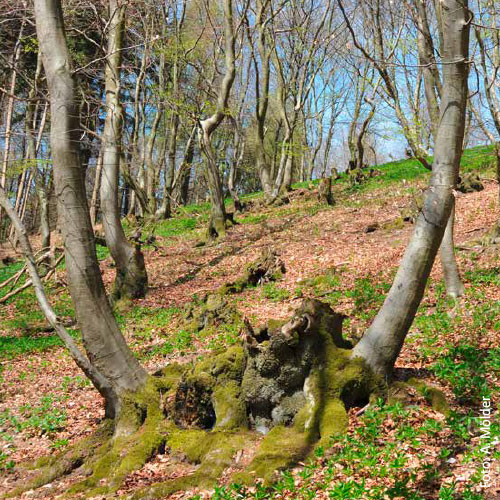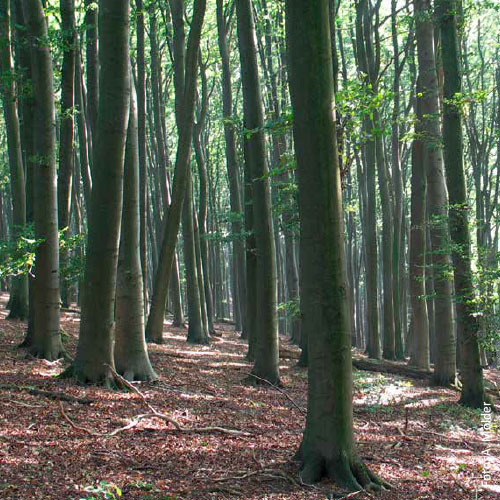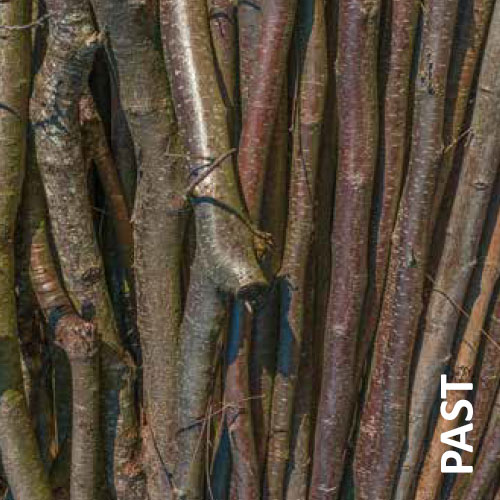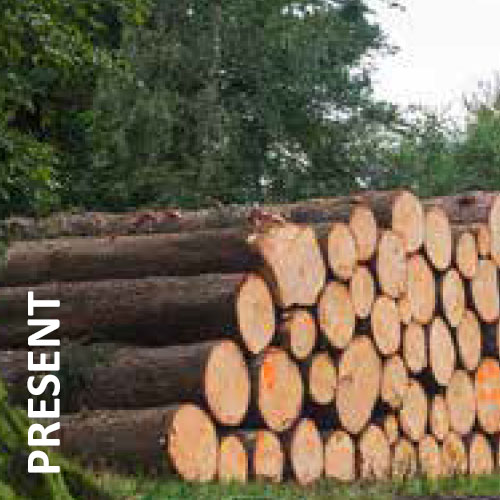In times when coal and oil were not available everywhere, wood was the main source of energy. In order not to waste valuable logs, deciduous tree species capable of regenerating (e.g., oak, beech, hornbeam) were used for firewood. They can re-sprout repeatedly from a cut stump and can be harvested every five to 30 years. This type of cutting creates shrub-like trees and a special type of forest: the low or coppice forest.
Forest management in the Osnabrück region
Coppice forest management was common in our private forests until the 20th century. Typical rejuvenation for the Osnabrück region was carried out by bending new shoots to the ground and fixing them there. But, from 1770 onwards, they started to clear the state forests of this low forest and to replace them with planted high forests.
Low or coppice forest (past)
After a tree has been cut down, several new shoots develop on the remaining stump, which grow into weaker trunks until the next harvest. This provides a constant source of firewood that is easy to transport, split, and dry.
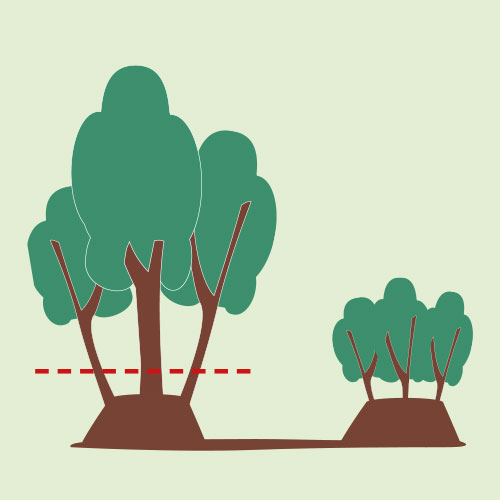
High forest (present)
Trees are only felled when they have reached the desired trunk diameter for use as building timber. During the growth period, trees are regularly removed in the course of forest maintenance (thinning) to optimize the stability and quality of the stand.
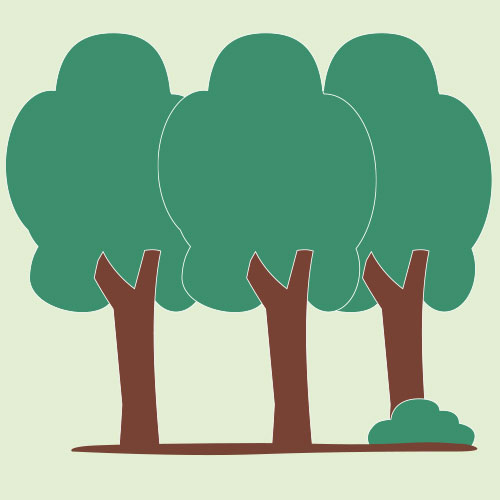

When a young deciduous tree is cut down, new shoots grow out of the stump. These grow into thin trunks that can be cut easily and used as firewood. In this way, firewood is harvested again and again for many years. Trees cut like this remain small, and a forest used in this way is also called a coppice forest. Large trees provide valuable timber and are actually too good to burn.
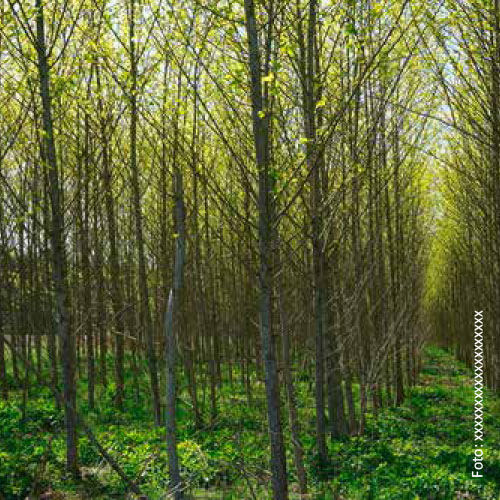
Firewood is a great source of energy because, unlike coal and oil, it grows back. Today, once again there is a lot of wood heating. The modern coppice forest is thus a short rotation plantation or energy forest.
The next station is waiting for you.


